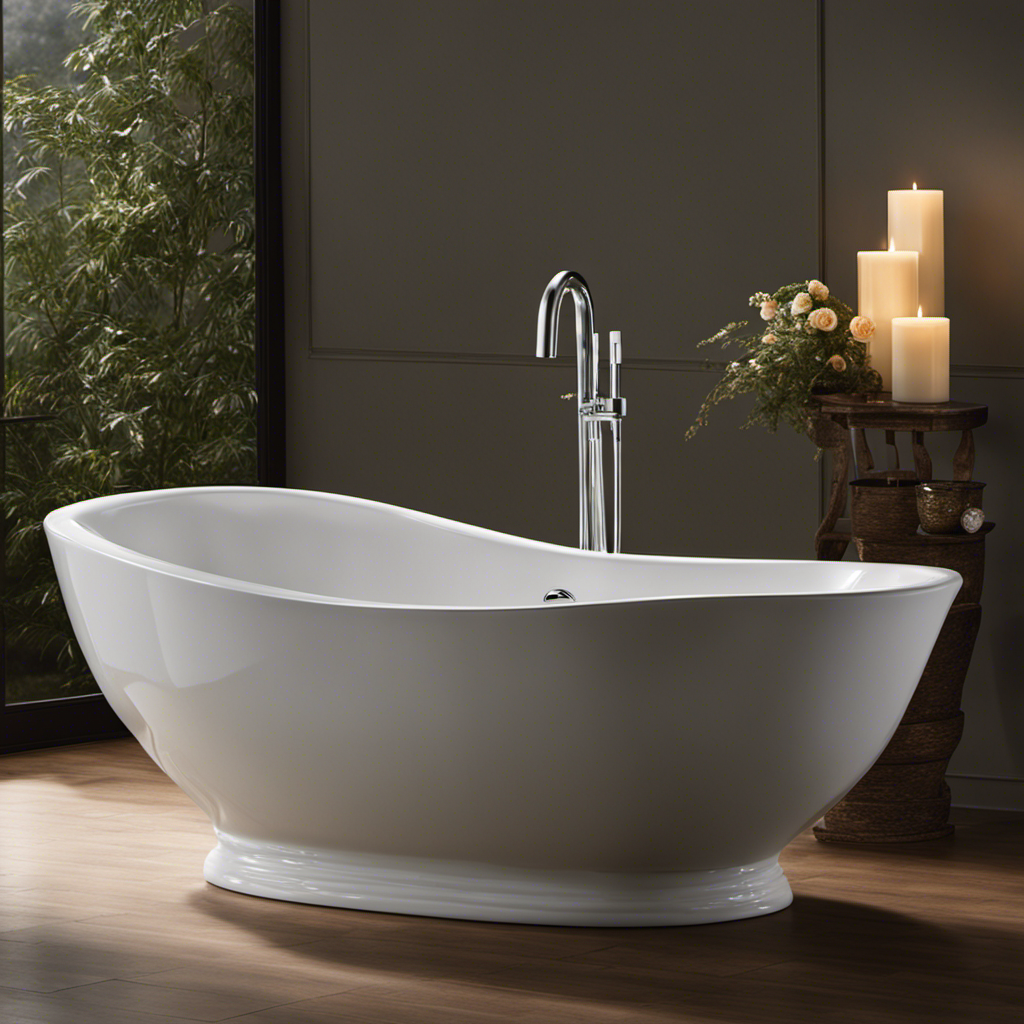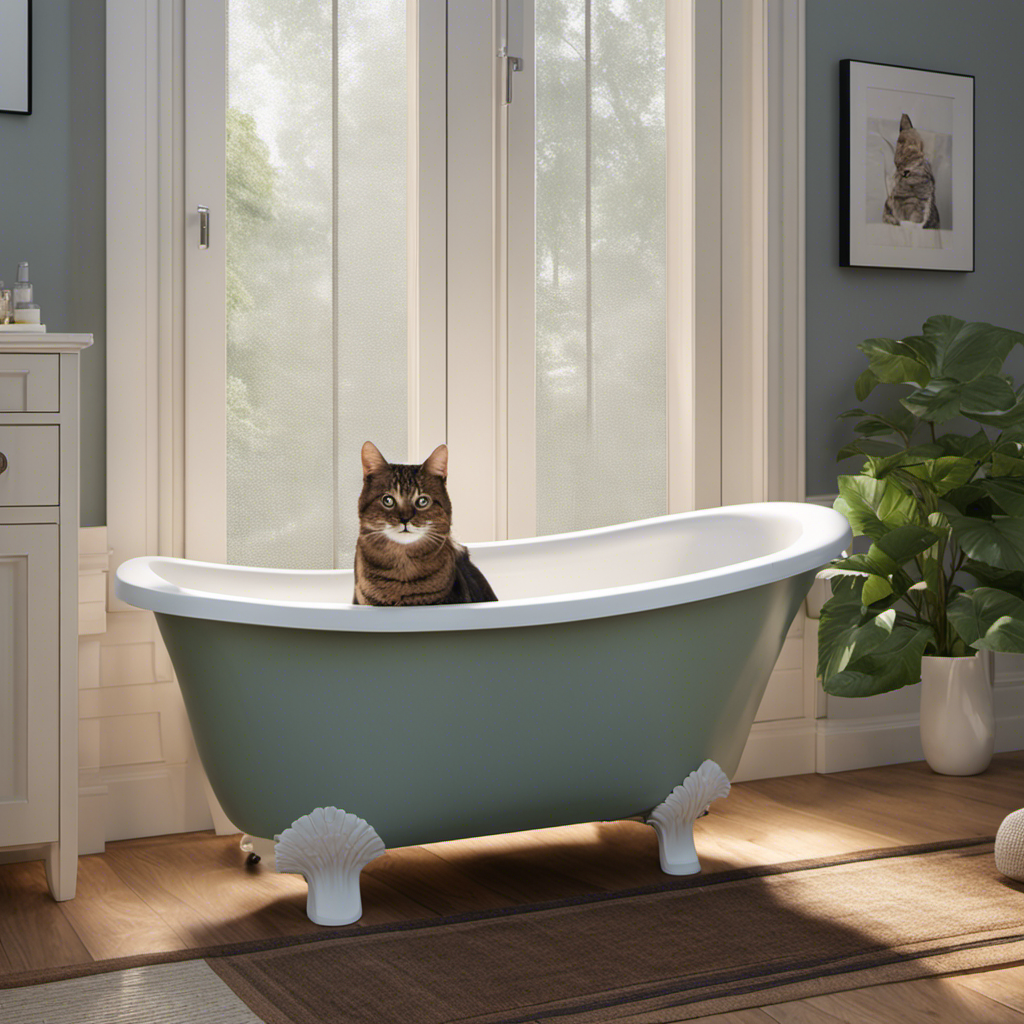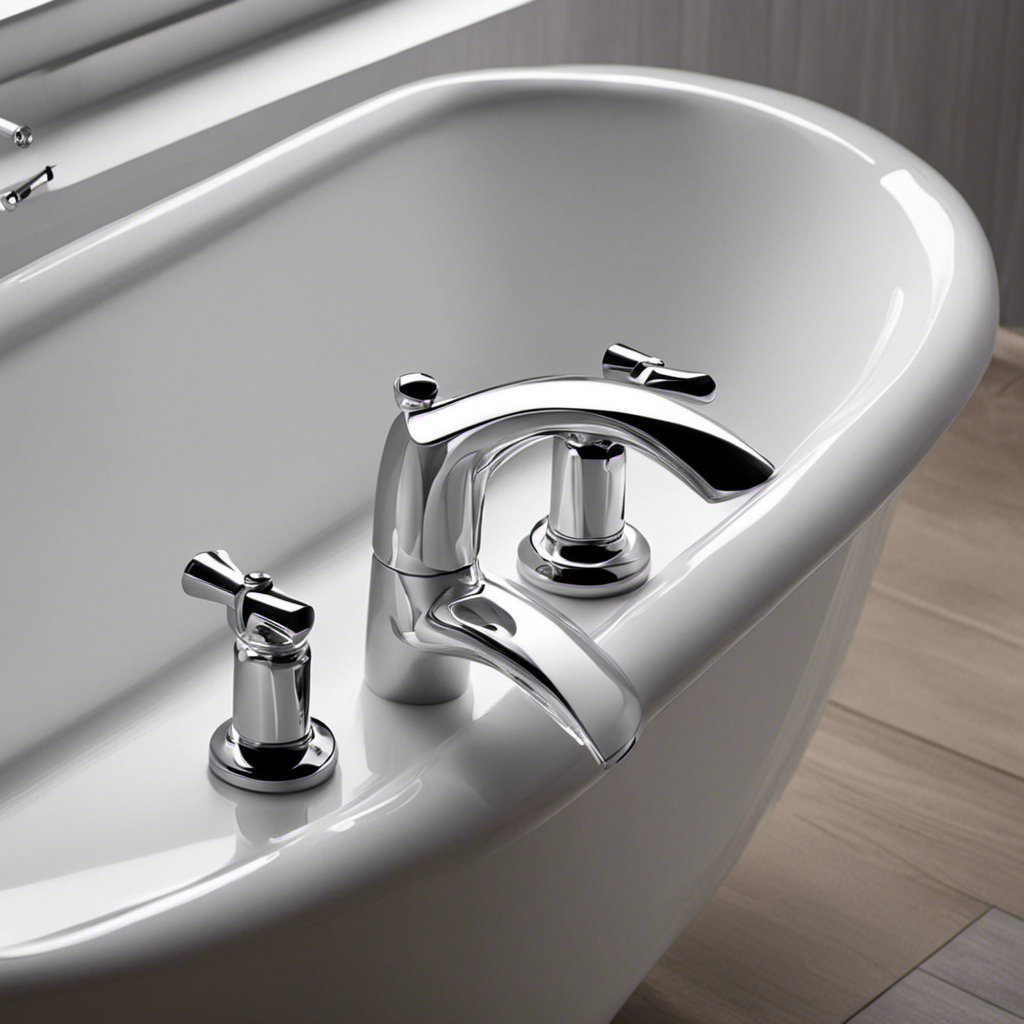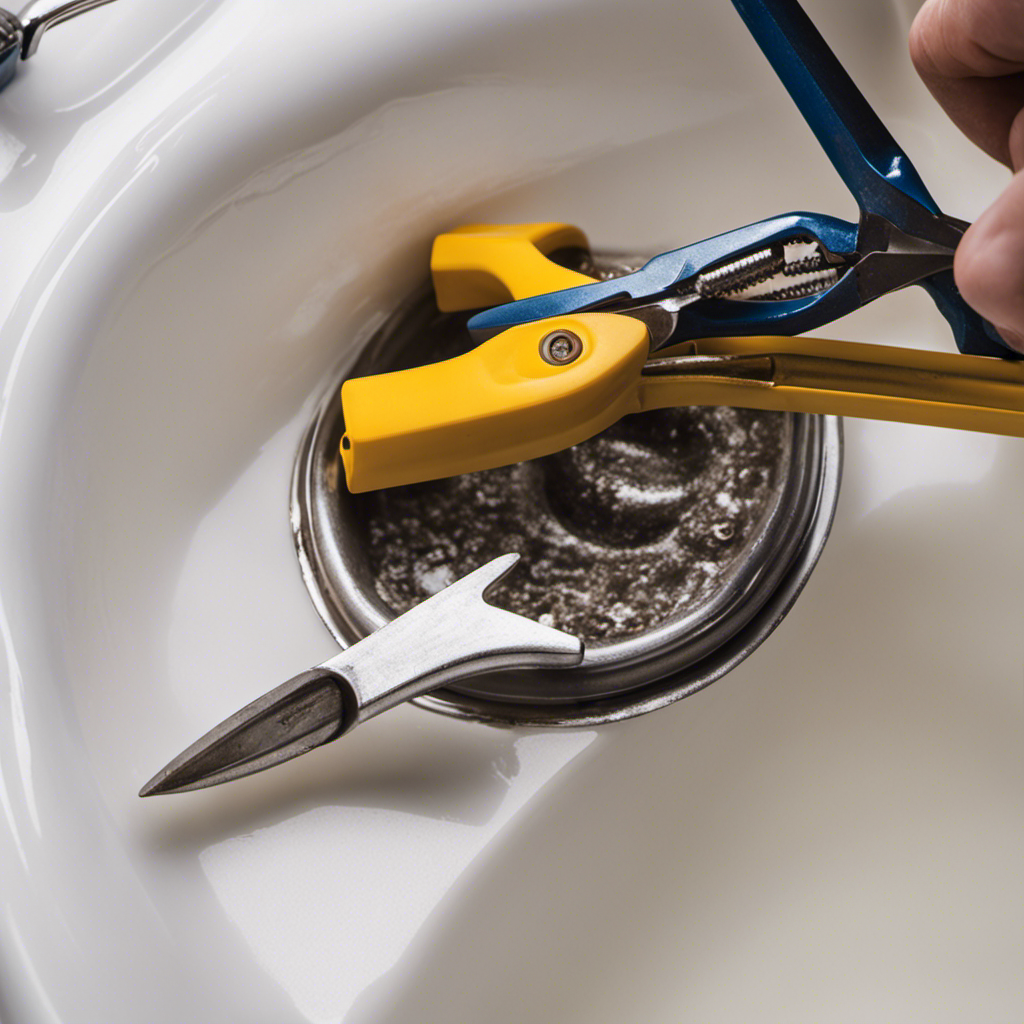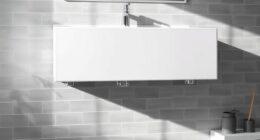We know it’s frustrating when your toilet won’t stop running with a dual flush system. But fear not, we’ve got the answers you need to put an end to this annoyance.
In this article, we’ll show you how to troubleshoot and fix common issues with your toilet’s dual flush system. From checking the flush valve to adjusting the water level, we’ll guide you through the steps to regain control over your toilet’s water usage.
Let’s get started!
Key Takeaways
- Checking and replacing the flush valve can resolve issues with leaks or cracks in the toilet tank.
- Adjusting the water level by turning the adjustment screw on the fill valve assembly can improve flushing power.
- Inspecting and replacing the flapper can fix problems with water not closing tightly or continuous flow.
- Cleaning or replacing the fill valve can help if there is debris or damage affecting its functionality.
Check the Flush Valve
To check the flush valve, we need to remove the toilet tank lid and inspect the mechanism inside. The flush valve is responsible for controlling the flow of water during flushing. If you’re experiencing issues with your toilet’s dual flush system, it may be necessary to replace the flush valve.

Start by turning off the water supply to the toilet and flushing it to drain the tank. Next, carefully remove the tank lid and locate the flush valve. Inspect it for any signs of damage or wear. If you notice any cracks or leaks, it’s time to replace the flush valve. Troubleshooting water flow issues can often be resolved by replacing this essential component.
Now, let’s move on to the next step: adjusting the water level.
Adjust the Water Level
After inspecting the flush valve, we can now move on to adjusting the water level in the toilet tank. Proper water level is crucial for the efficient functioning of the dual flush system. By adjusting the water level, we can ensure optimal flushing performance and prevent the toilet from running.
To adjust the water level, follow these steps:

- Locate the water level adjustment screw or valve on the fill valve assembly.
- Turn the adjustment screw or valve clockwise to decrease the water level or counterclockwise to increase it.
- Flush the toilet and observe the water level. Adjust as needed until the water level reaches the desired level.
Increasing the water flow in the toilet tank can help improve flushing power. A higher water level allows for a stronger flush, ensuring waste is properly eliminated.
After adjusting the water level, we can now move on to inspecting the flapper, which is another vital component of the dual flush system.
Inspect the Flapper
We will now examine the flapper, a crucial component of the dual flush system, to ensure its proper functioning and prevent any toilet running issues.
The flapper is responsible for sealing the flush valve and controlling the water flow during flushing. Over time, the flapper can become worn or damaged, leading to leaks and continuous running of the toilet.
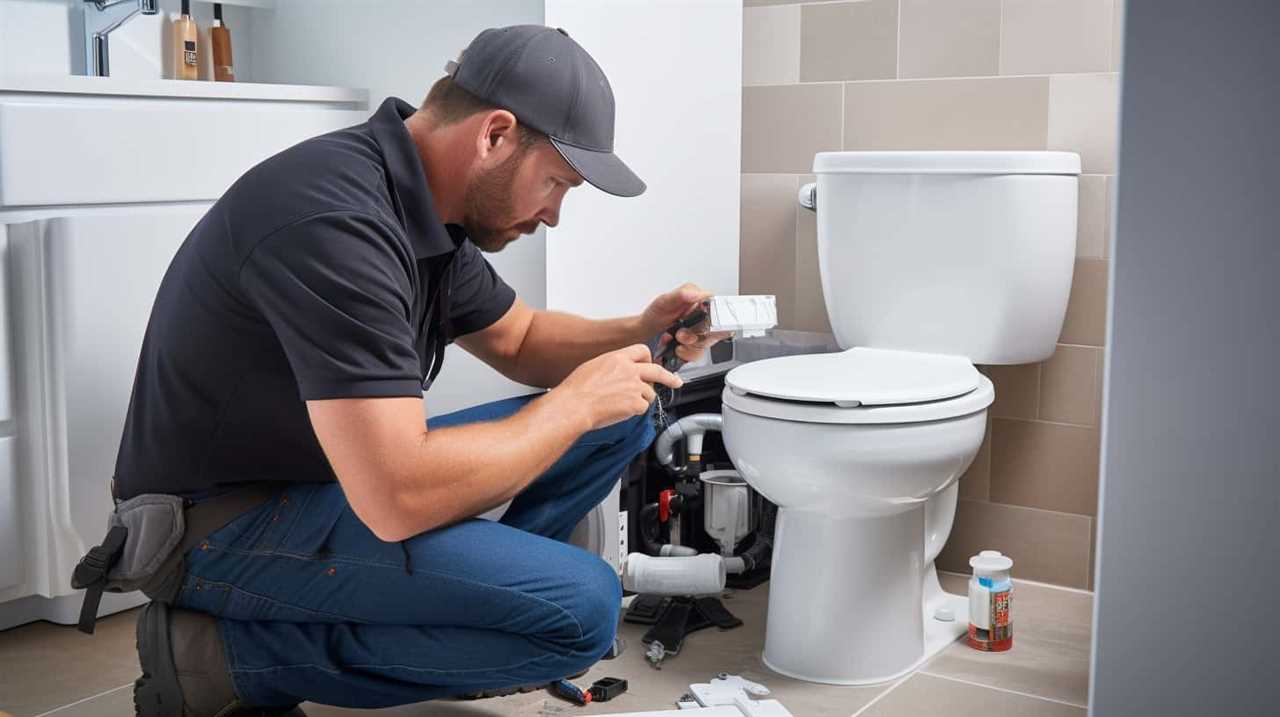
To inspect the flapper, start by turning off the water supply to the toilet. Remove the tank lid and locate the flapper. Check for any signs of wear, such as cracks or decay. If the flapper is damaged, it’s recommended to replace it with a new one.
Additionally, you can test the water pressure by flushing the toilet and observing the flapper’s response. If the flapper doesn’t close tightly or if water continues to flow, it may be necessary to adjust the chain or replace the flapper altogether.
Regularly inspecting and maintaining the flapper will ensure the proper functioning of your dual flush toilet system.
Clean or Replace the Fill Valve
Now let’s address the next step in resolving the issue of a running dual flush toilet by examining the fill valve and determining whether it needs cleaning or replacement.
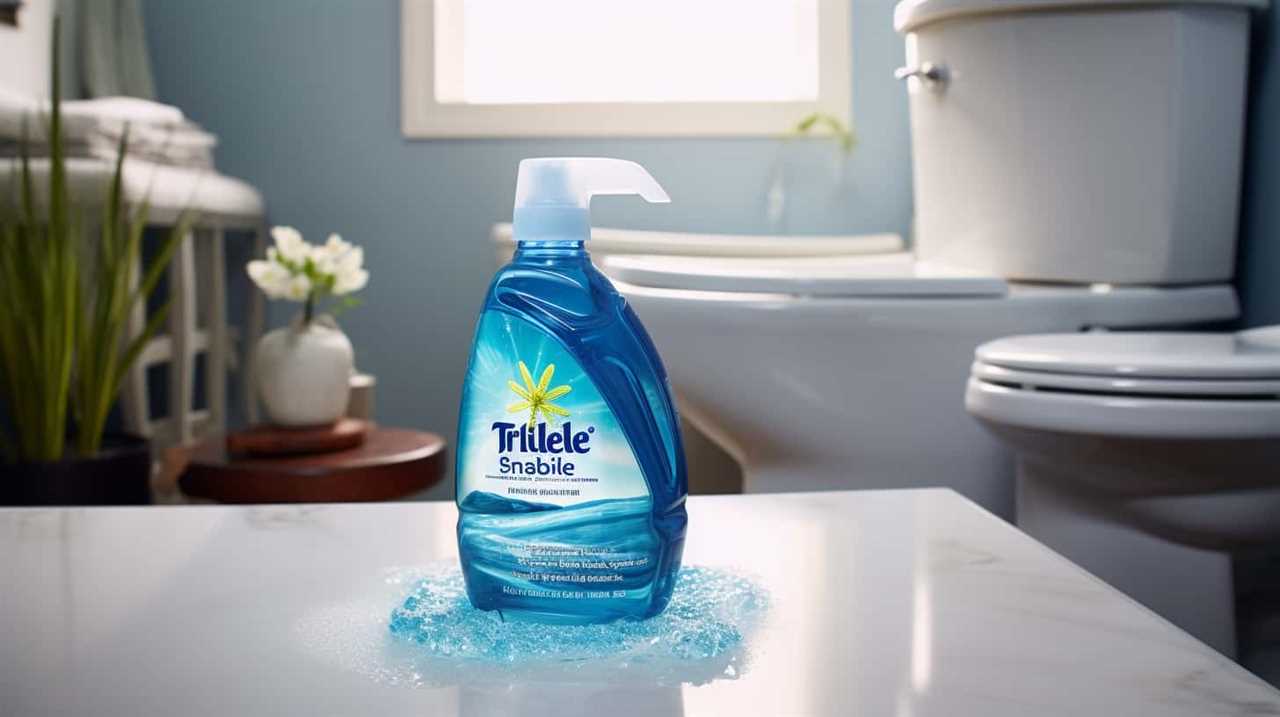
The fill valve is responsible for regulating the water level in the tank, and if it isn’t functioning properly, it can lead to leaks and constant running. Here are some steps to troubleshoot and fix the fill valve:
- Turn off the water supply to the toilet.
- Remove the tank lid and locate the fill valve.
- Inspect the fill valve for any visible signs of damage or debris.
- If there’s debris, clean the valve using a soft brush or cloth.
- If the valve is damaged or cleaning doesn’t solve the issue, consider replacing it.
By cleaning or replacing the fill valve, you can effectively stop the toilet from running and repair leaks.
However, if you’re unsure or uncomfortable with the process, it’s best to seek professional help if needed.
Seek Professional Help if Needed
If you’re unsure or uncomfortable with the process, it’s best to consider seeking professional help if needed to address any issues with your dual flush toilet. While troubleshooting tips can be helpful, sometimes it’s best to leave the task to experts who’ve the knowledge and experience to handle complex problems.

Seeking assistance from a professional plumber or toilet repair specialist can save you time, effort, and potential frustration. They’ll have the necessary tools and expertise to accurately diagnose and fix any underlying issues with your dual flush toilet.
Additionally, professionals can provide valuable advice on maintenance practices to prevent future problems. Don’t hesitate to reach out for professional help if you’re uncertain about handling the repairs yourself.
Frequently Asked Questions
What Are the Common Reasons for a Dual Flush Toilet to Continuously Run?
Common reasons for a dual flush toilet to continuously run include a faulty fill valve or a misaligned flush button. To fix the issue, try adjusting the fill valve or realigning the flush button mechanism.
How Can I Determine if the Flush Valve Is the Cause of the Problem?
To determine if the flush valve is causing the issue, start by inspecting it. Troubleshooting dual flush issues requires a thorough examination of the valve’s components and functionality.
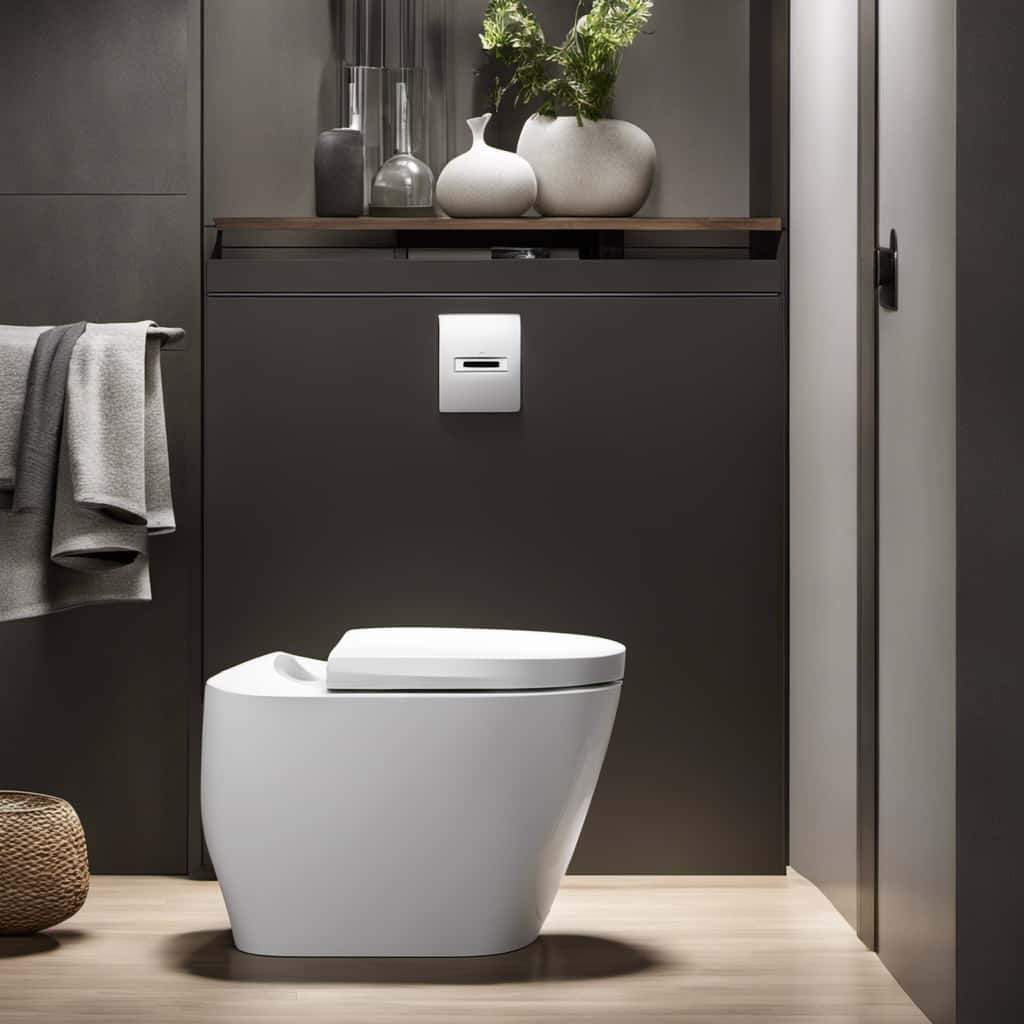
What Are the Steps to Adjust the Water Level in a Dual Flush Toilet?
To adjust the water level in a dual flush toilet, first locate the fill valve. Use a screwdriver to turn the adjustment screw clockwise to decrease the water level or counterclockwise to increase it. Ensure a proper water level to fix a leaking dual flush toilet.
How Do I Know if the Flapper Needs to Be Replaced or Just Cleaned?
To determine if the flapper needs replacing or cleaning, observe the water flow after flushing. If water continues to run, try cleaning the flapper first. If the issue persists, it may need replacing.
Are There Any Specific Troubleshooting Steps I Can Try Before Seeking Professional Help?
To troubleshoot a running dual flush toilet, try these DIY fixes: check the water level, adjust the float, clean or replace the flapper, and inspect the fill valve. If the problem persists, consider seeking professional help.
Conclusion
To prevent your toilet from running on dual flush, it’s crucial to check the flush valve. Adjust the water level, inspect the flapper, and clean or replace the fill valve if necessary.
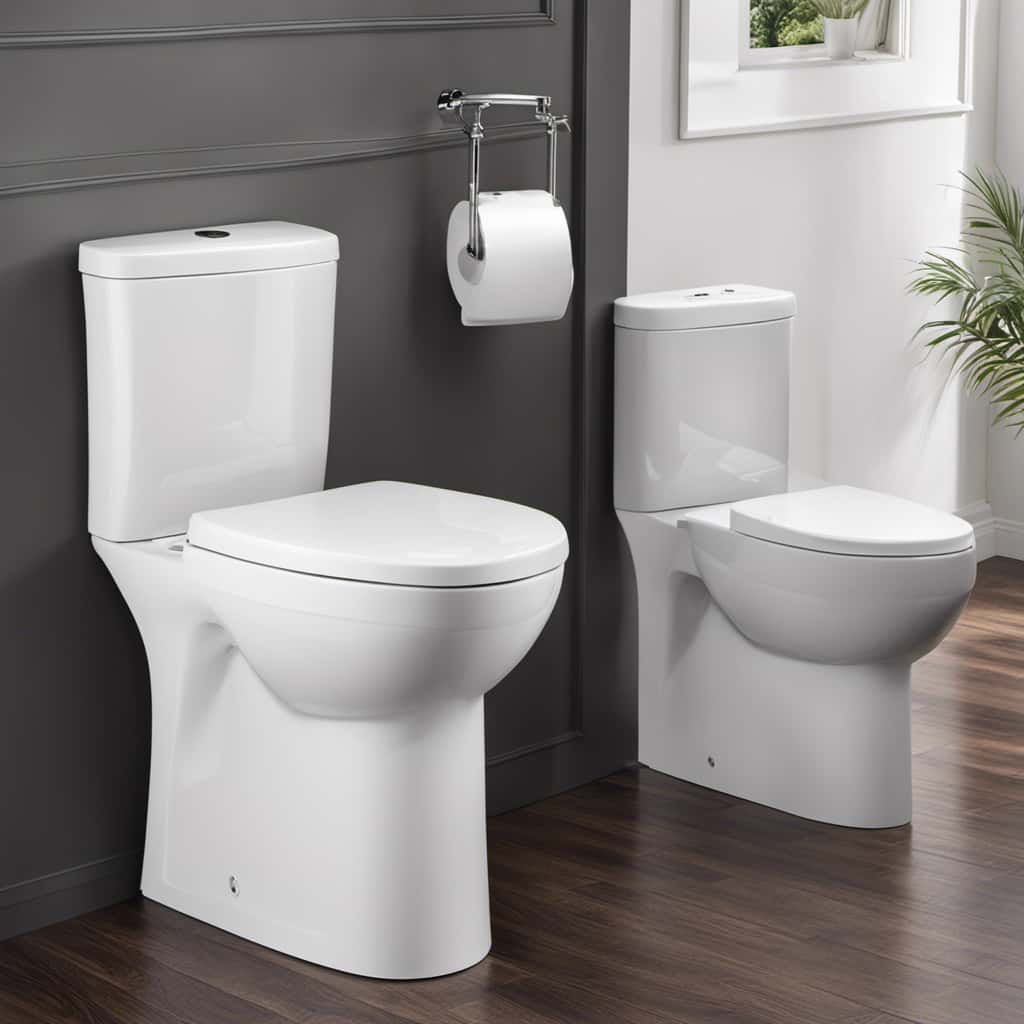
By taking these steps, you can ensure that your toilet functions efficiently and saves water.
Remember, just like a well-oiled machine, a properly maintained toilet keeps things flowing smoothly in your home.

